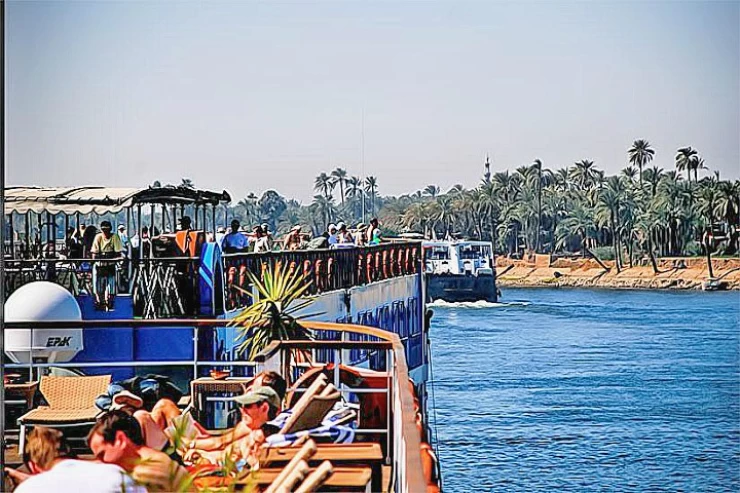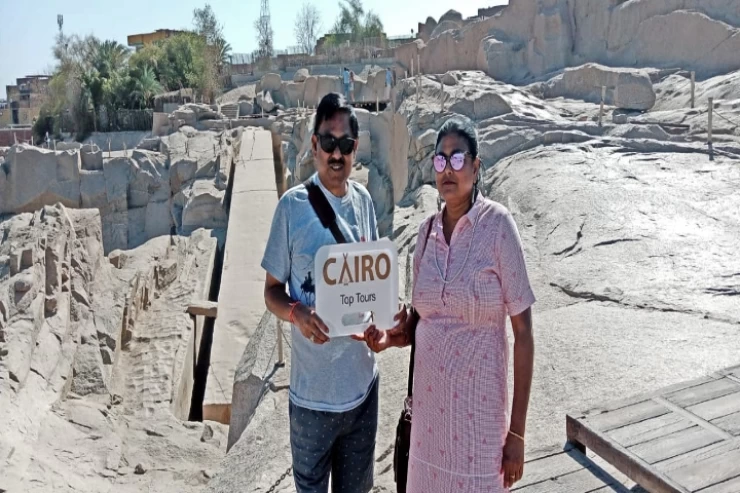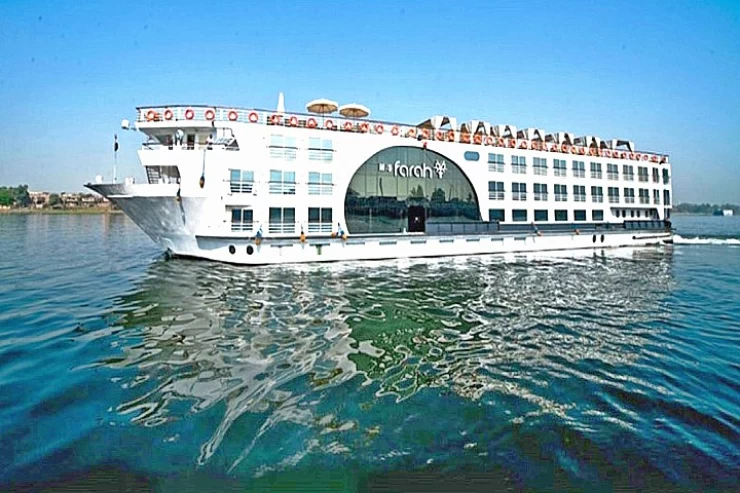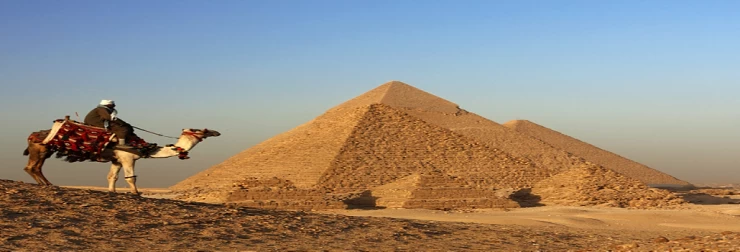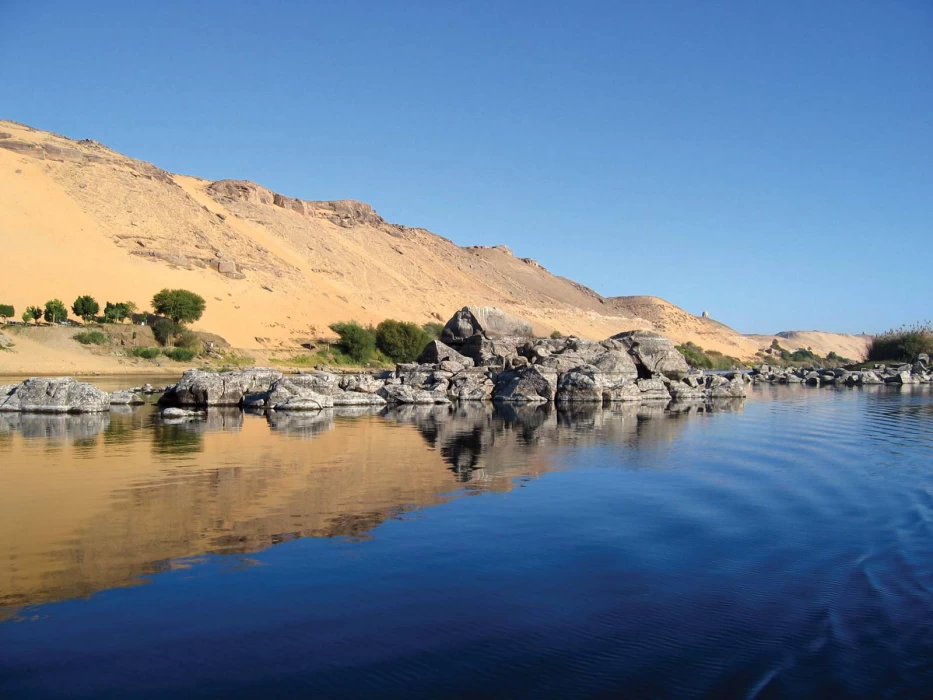
尼罗河
阿斯旺纳赛尔湖
世界上最大的人工湖纳赛尔湖以埃及总统贾迈勒*阿卜杜勒*纳赛尔(Gamal Abdul Nasser)的名字命名,他的贡献导致了它的建立。 阿斯旺高坝创建了一个沿着尼罗河延伸550公里(340英里)的湖泊,是纳赛尔总统在尼罗河建造大坝的想法。
这导致水位向南上升,淹没了其路径中的所有东西。 然而,沙漠里到处都是水,纳赛尔诞生了,这是埃及和苏丹之间的边界。 这是相当5000平方公里,创造了世界上最重要的水库,称为民族海洋。
阿斯旺大坝筑坝尼罗河水域的结果是纳赛尔湖。 总统贾迈勒*阿卜杜勒-纳赛尔在20世纪60年代和70年代建造了这座大坝,以管理每年的洪水。
任何人都只会惊讶于这个平静的海洋,几乎没有任何波浪,被自然的地平线所包围的怪异,奇妙的事情。 这是地球上一个新奇的地方,因为沙漠被上升的尼罗河淹没,几乎可以在湖水中死亡。 因此,结果是一个理想的景观。
纳赛尔湖和阿斯旺的更多景点可以在埃及的豪华旅游之一,让您留在最杰出的酒店和尼罗河游轮,或者如果您是一个小量的钱旅行,并希望节省您的时间和费用,您可以检查我们各种各样的埃及廉价经济旅游套餐。 如果您遭遇意外并遭受身体伤害,请不要担心,因为我们的专业运营商为您定制了一系列埃及轮椅无障碍旅游套餐,使用所有无障碍车辆和残疾人不同设施,这是我们埃及经典旅游的主要类别之一。
纳赛尔湖是世界上最重要的人造湖泊之一,建于1960年至1970年之间,它的名字Gamal Abdel Nasser纪念埃及革命领袖。
纳赛尔湖
这个湖是努比亚人美丽的土地之一,他们在埃及历史上仍然坚持着他们古老的传统。 在法老时代,这个地理区域一直是非洲最强大的王国之一,因此古埃及最强大的国王确实来自一个地理区域,传统的埃及人采用了它的许多习俗。 然而,在这一辉煌中,如今几乎没有任何人类学遗留下来,一个在埃及南部和苏丹北部之间的问题中幸存下来的少数民族城市。
阿拉伯人抵达埃及导致了努比亚人的身份丧失,因此大多数人重新成为伊斯兰教。 然而,幸运的是,有几个人仍然努力保持他们的传统并保留他们原来的语言。
阿斯旺高坝的建设对巨大的遗产产生了负面影响,因为它标志着几十座寺庙的顶部,这些寺庙在水下永远消失。 幸运的是,联合国教科文组织启动了联合行动,拯救了十四座寺庙,以及阿布辛贝的神话般的网站,该网站被逐块切割并在较高的地区进行改造,甚至托勒密菲莱神庙也被吸引到阿吉利卡岛,从洪水中拯救出来。
菲莱神庙/伊希斯神庙
菲莱神庙/伊希斯神庙
由托勒密王朝建造的菲莱神庙(Philae Temple)纪念伊希斯(Isis),奥西里斯(Osiris)和荷鲁斯(Horus),在基督教公元550年传播后保留了古埃及宗教。
Disregarding its claim to being the longest river in the world, the Nile epitomizes all that is Egypt in terms of geography, history, and culture. The Nile is located in the northeastern region of Africa and is about 6,650 kilometers long (4,130 miles), running through 11 different countries before emptying into the Mediterranean Sea. Nevertheless, the most well-known portion of the river is certainly in the country of Egypt, where not only has the river formed the present-day geography of the place but also sustained one of the most ancient and greatest civilizations in the world. It is often referred to as the ‘Gift of the Nile’. Most of the wealth, progress, and history of Egypt have revolved around this river.
Egypt boasts of long stretches of deserts, but it is interesting to note that the Nile River has succeeded in forming a vegetative zone in the region otherwise characterized by dry lands. Without the Nile River, the majority of regions within this nation’s borders would more likely than not be empty and unproductive land. It supplies water, which is sourced for farming, business, and even household use. In ancient times, the Nile used to spill over its banks, and every year the lands along the river, such as the region around the Nile, received rich alluvial deposits that were excellent for farming. These floodwaters every year without fail were perfect for growing crops for the ancient Egyptians, who grew different crops such as wheat, barley, and flax, which were the main food and agricultural income of this community.
Today, while the Aswan Dam was built in 1970, which led to the complete control of tree flooding and therefore the abolition of the age-old flood regime, the Nile River is still of great importance for agriculture in Egypt. Filmy green container siding strips that fit perfectly along the banks of the river, which is reminiscent of the shape of the river, sharply contrast with the yellow sand canvas of the desert, indicating that the Nile River is of key importance to the people of Egypt.
The Nile was an important resource for agriculture, but its relevance does not end there; much of today’s world owes its existence to Egypt as we know it. Civilizations flourished on both banks of the ancient Nile as it provided not just water and rich alluvial plains, but also integrated the two banks using transport and communication. The river was crisscrossed by boats transporting goods, people, and ideas, effectively bridging the gap between Upper and Lower Egypt and emerging as one of the most powerful kingdoms.
Furthermore, the river found its place also in the divine and cultural aspects of the ancient Egyptians. The floods of the river, which were very important for agriculture, were treated in ancient times as a curse from Hapi, the protective god of the fertile Delta and the Nile. The river was also linked with the idea of death and what came after it. The Egyptians believed that the east side of the Nile River where the sun rose was the region of the living, while the west side where sunset occurred was the realm of the dead. This explains why some of the country’s most popular structures, including the Great Pyramids and the tombs in the Valley of Kings, are located on the western bank of the river.
The legacy of the Nile is inscribed in the very topography of the nation of Egypt, with nearly all its iconic representations located along the banks of the river. In Cairo, for instance, west of the Nile runs the Giza Plateau, which houses the Great Pyramid among other pyramids, and the infamous Sphinx that has stood for more than 4500 years. The stones used to create these buildings rose from within the depths of the Nile and were transported therein, thus revealing the contribution of the river towards the architectural peculiarity of Egypt.
Going further down south to Luxor, yet another ancient hub, the Nile cuts across it. East Bank consists of the vast temples of Karnak and Luxor, which were the places of worship for the exalted pharaohs. West Bank is characterized by the flat surface of the Valley of the Kings, which hosts the burial places of the most powerful kings’ in Egyptian history, with the famous King Tut’s tomb being one of them. It was the Nile that linked those cities and the temples, and the Nile waters flowed in bringing the resources necessary for erecting such remarkable edifices.
One of the striking cases of the power of the Nile on Egyptian monuments might be the temples of Abu Simbel, which are found on the southern border of Egypt close to Sudan. Colossal temples were carved by the mountain by Ramses II, and since they are located close to the river, there was a risk when the Aswan High Dam was being built. In an astonishing engineering accomplishment, the temples were moved to a higher location to protect them from the adverse effects of the water levels of Lake Nasser, an enormous reservoir that was built because of the dam. At this point, they are both an ancient and contemporary reminder of the connection that Egypt has with the Nile.
The Nile is still an integral aspect of modern-day Egypt. The river is still used for irrigation and even provides drinking and industrial water. It has also maintained its relevance as a waterway, and especially as a tourism-based route. Cruises on the Nile between Luxor and Aswan allow tourists to experience the beauty of the river and, along the way, some of the exotic historic sites of Egypt. This pace of the river sets the mood for temple, tomb, and village raids, which are fun-beholding sights of historical Egypt.
The Nile has been a major factor in the growth of cities like Cairo, Aswan, and Luxor. In Cairo, the Nile passes through the very middle of the populated city, providing a serene gate away from the noisy road. Corniche El Nile, which is a wall fronting the river in the city, is frequented by people, both locals and tourists, who go there to see the river, and particularly sunsets are breathtaking. Calm sailing wooden boats called feluccas move on top of the river, recalling the magic of the serene Nile.
Aswan is characterized by the majestic flow of the Nile that meanders, surrounded by patches of granite and tiny islands, providing an ideal ambiance to learn about the Nubian culture and Philae Temple. The slower-paced atmosphere created by the clear waters in Aswan makes it one of the most captivating places along the Nile, where visitors feel relaxed as if everything is flowing with the river at a gentle pace.







